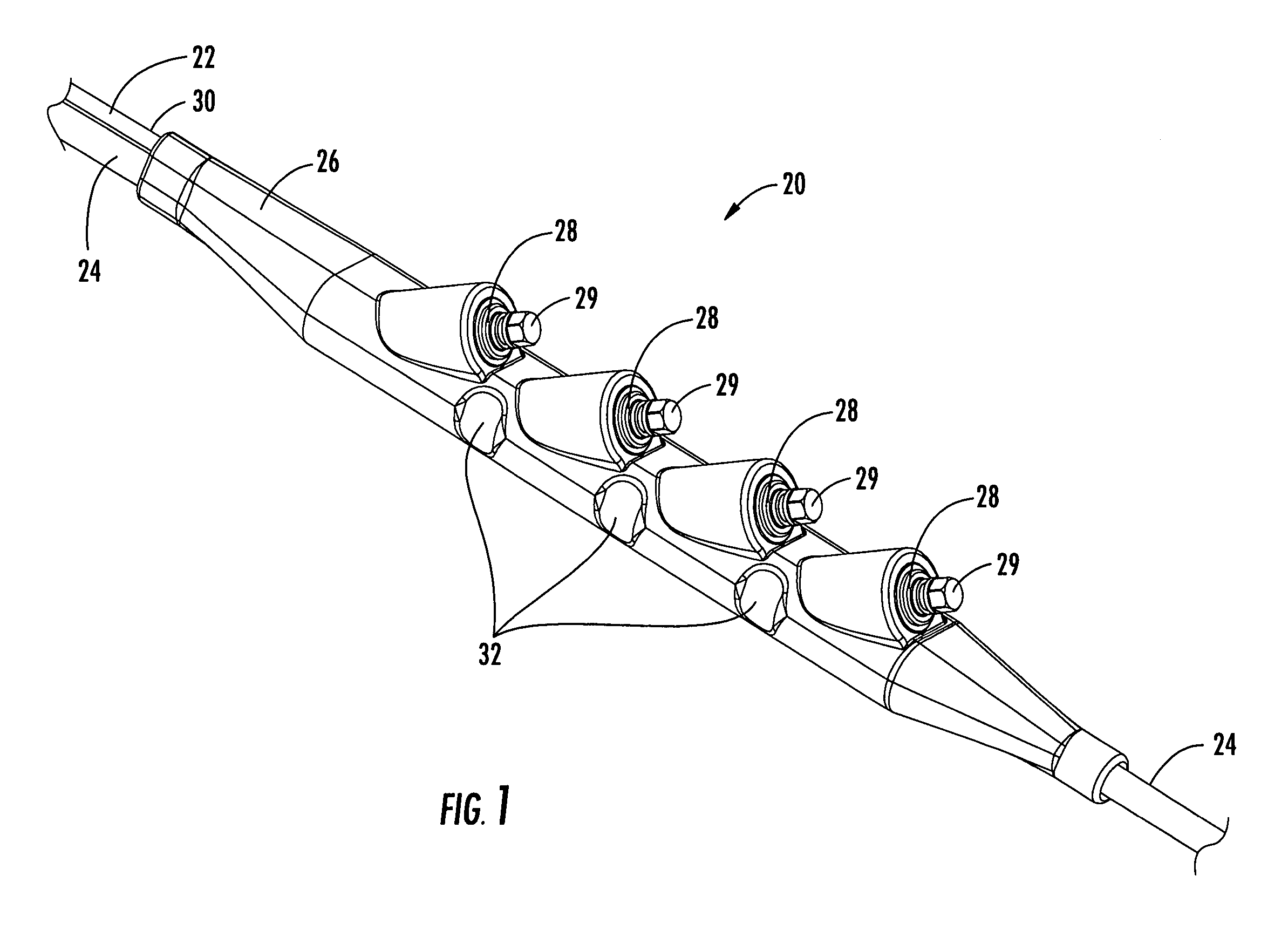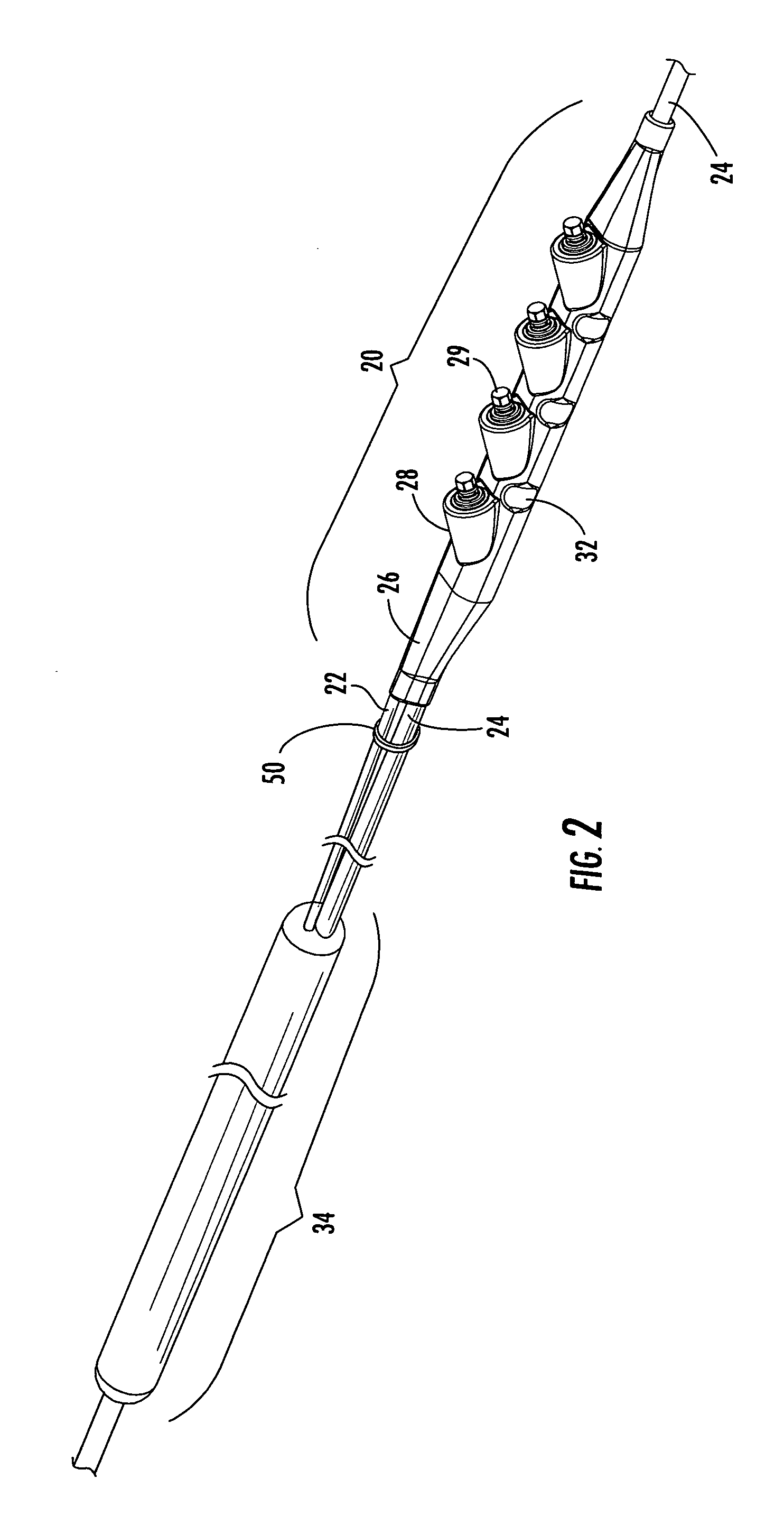Adjustable tether assembly for fiber optic distribution cable
a technology of fiber optic distribution cable and tether assembly, which is applied in the direction of optics, fibre mechanical structures, instruments, etc., can solve the problems of difficult to identify a particular optical fiber of the distribution cable, difficult to reconfigure optical connections within the splice closure, and often requires the assistance of highly skilled field technicians at significant cost and under field working conditions
- Summary
- Abstract
- Description
- Claims
- Application Information
AI Technical Summary
Benefits of technology
Problems solved by technology
Method used
Image
Examples
Embodiment Construction
[0024]The present invention will now be described more fully hereinafter with reference to the accompanying drawings in which exemplary embodiments of the invention are shown. However, the invention may be embodied in many different forms and should not be construed as limited to the embodiments set forth herein. These exemplary embodiments are provided so that this disclosure will be both thorough and complete, and will fully convey the scope of the invention and enable one of ordinary skill in the art to make, use and practice the invention. Like reference numbers refer to like elements throughout the various drawings.
[0025]In one method of use, the tether assembly of the present invention mitigates span length measurement issues that result from the improper location of a mid-span access location on a fiber optic distribution cable due to differences between a pre-engineered span length distance and the actual span length distance following installation of a distribution cable. I...
PUM
 Login to View More
Login to View More Abstract
Description
Claims
Application Information
 Login to View More
Login to View More - R&D
- Intellectual Property
- Life Sciences
- Materials
- Tech Scout
- Unparalleled Data Quality
- Higher Quality Content
- 60% Fewer Hallucinations
Browse by: Latest US Patents, China's latest patents, Technical Efficacy Thesaurus, Application Domain, Technology Topic, Popular Technical Reports.
© 2025 PatSnap. All rights reserved.Legal|Privacy policy|Modern Slavery Act Transparency Statement|Sitemap|About US| Contact US: help@patsnap.com



